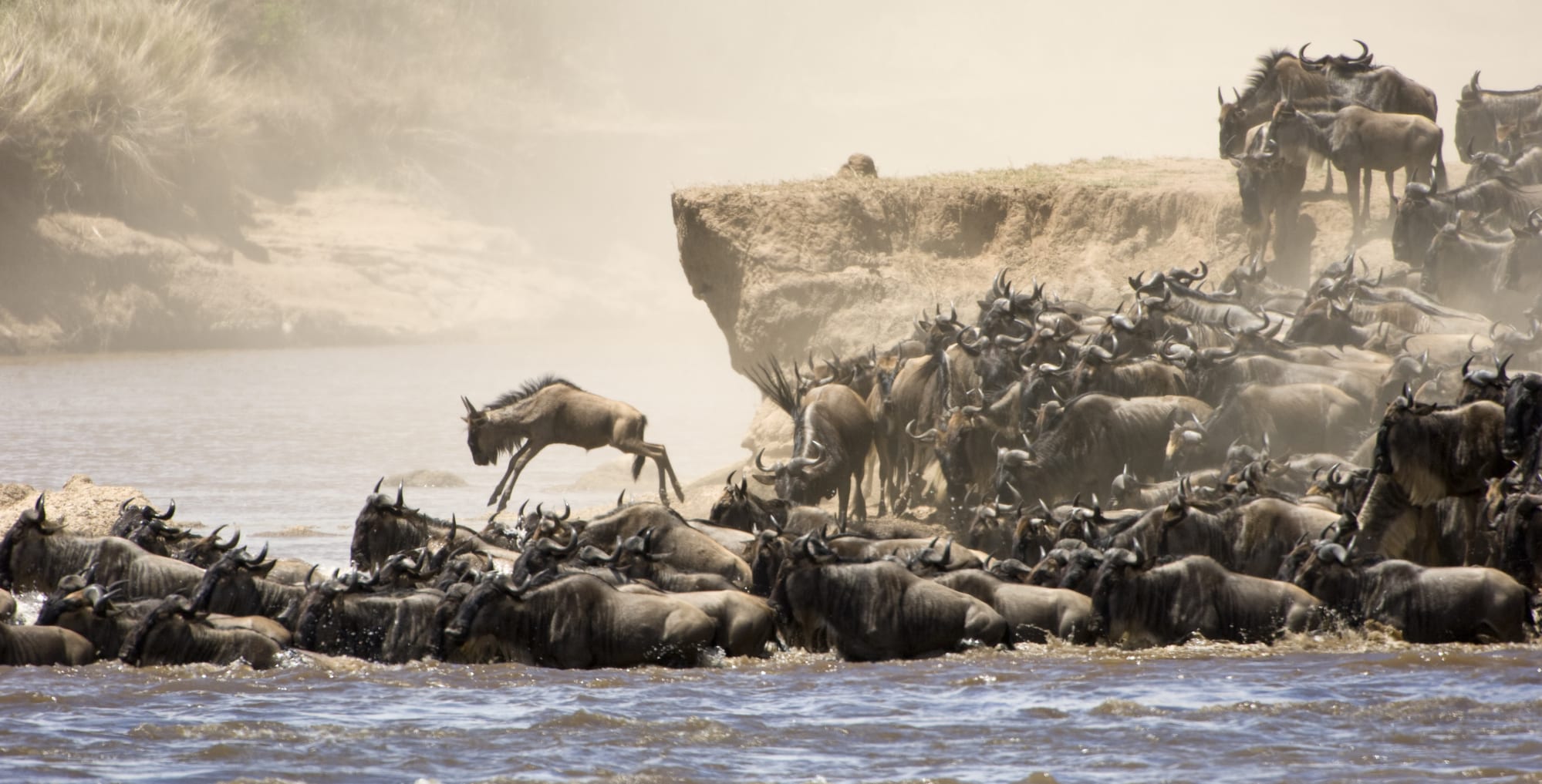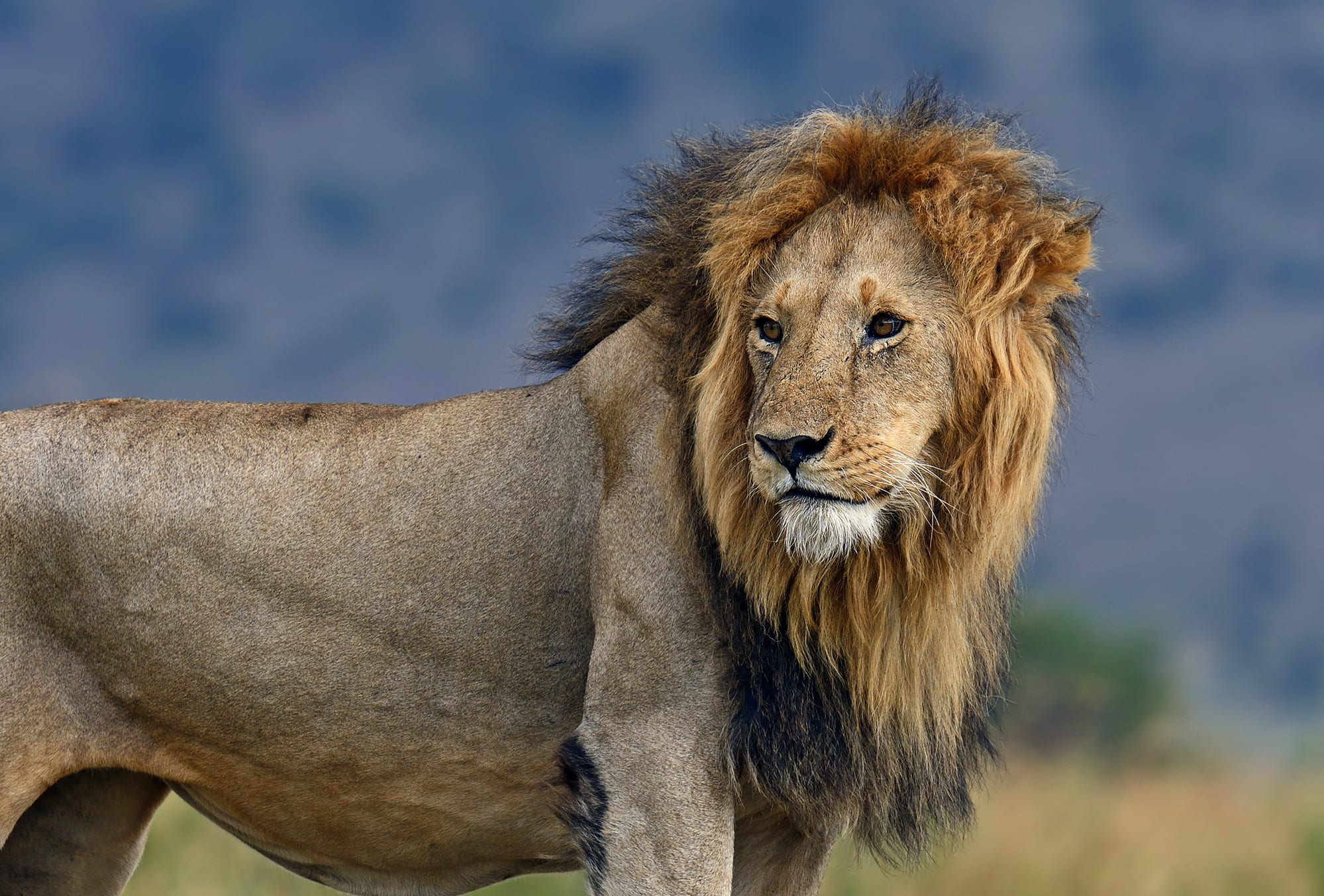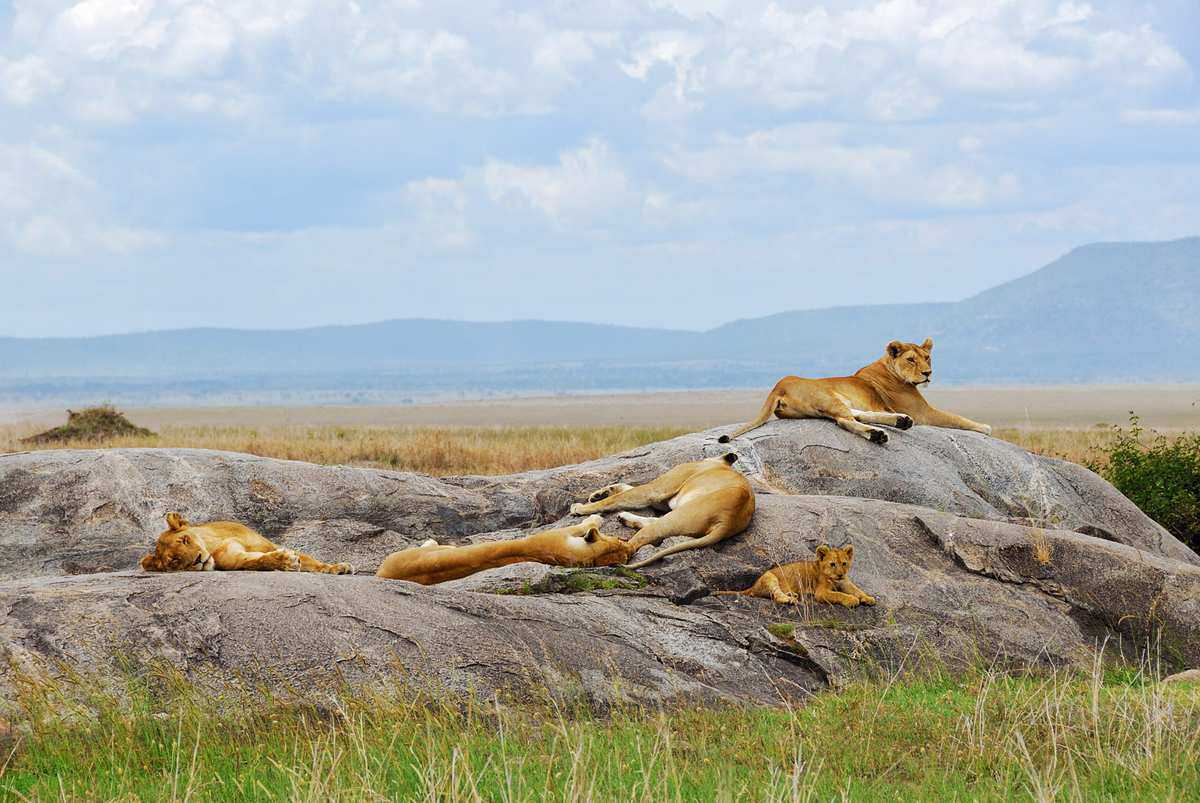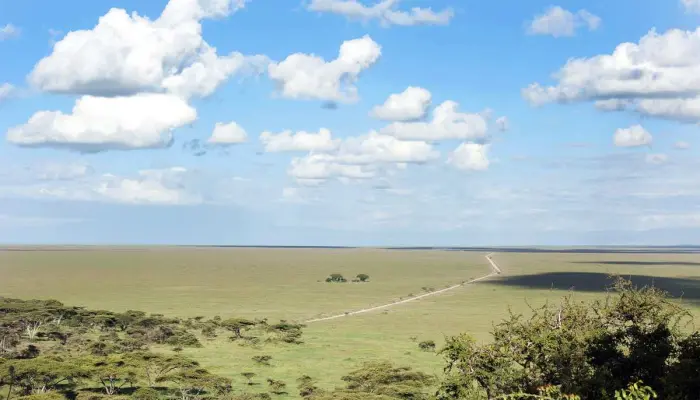Undoubtedly, Serengeti National Park is the most famous wildlife reserve in the world, unsurpassed in its natural beauty and scientific value, possessing a uniquely magical allure.
The Serengeti boasts the largest concentration of savannahs in all of Africa, with the park covering a total area of 14,763 sq km. Most of the grand nature programs about African wildlife have been filmed in this endlessly beautiful and diverse sanctuary, as the park is home to the largest number of wild animals in the world. The Serengeti is linked with the Maasai Mara National Reserve into one stunning ecosystem, where the world-famous migration of millions of blue wildebeests, zebras, and gazelles takes place. There are many descriptions of this fantastic spectacle, but it all depends on where and when the rains fall.
Migration in the Serengeti

In the southern part of the Serengeti, rains usually fall from November to April. During this time, the abundance of grass and water makes this area attractive for migrating herds, where they gather and reproduce. Most of the young are born in February, but when the rains stop, the savanna quickly dries up, and the food supply for the wildebeests, zebras, and gazelles ends, so they start migrating north. Typically, they cross the border with Maasai Mara in July and August, so if you find yourself in the Serengeti during this time, you can observe the moving herds.
Of course, the migration attracts many predators – lions, leopards, jackals, hyenas, and cheetahs – which plentifully feast on the green savannah.
Safari in the Serengeti

The day is dedicated to another full-day safari, so you will have plenty of time to truly enjoy the thrilling and impressive wildlife. You will be driving around the central part of the Serengeti (the Seronera Valley), which the local Maasai call "Serengeti," meaning "land of endless plains." Each day on safari is unique, and the experiences will change day by day. If you're lucky, you can see the "Big Five" (buffalo, elephant, leopard, lion, and rhinoceros) up close. Tanzania has also come up with the "Big Nine" to make safaris even more exciting. In addition to the five aforementioned animals, this list includes the zebra, giraffe, cheetah, and hippopotamus as "must-sees" during a safari in Tanzania.
But regardless of which animals you see on your safari day, it will always be a huge adventure. Watching gazelles gracefully leap through the grass. Or giraffes, stretching their long necks to reach the leaves of characteristic acacia trees. Or large herds of zebras, each with a unique pattern, like fingerprints in humans. Or cheetahs, whose slender and athletic bodies make them the fastest land mammals in the world.
Practical Tips for Tourists

When traveling to the Serengeti, it's important to be well-equipped and show respect for the local flora and fauna:
- Bring binoculars, telephoto lenses for cameras, sunglasses, a head covering, and sunscreen.
- Wear comfortable footwear and clothes made of natural, breathable fabrics.
- Maintain a safe distance from wild animals and do not attempt to feed them.
- Follow the instructions of rangers and guides; they are responsible for your safety.
- Do not leave trash in the park; respect the natural habitat of the animals.
Conclusion

Visiting the Serengeti is a truly unique experience that allows you to touch the untouched wild nature of Africa. To maximize the impression of the trip, it's better to plan the journey in advance and choose the optimal time of year depending on your interests - whether it's watching the Great Migration or meeting predators during the hunting season. In any case, you are guaranteed to get unforgettable impressions!
